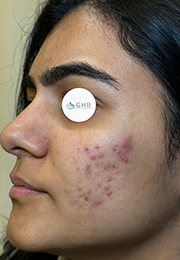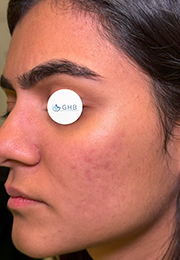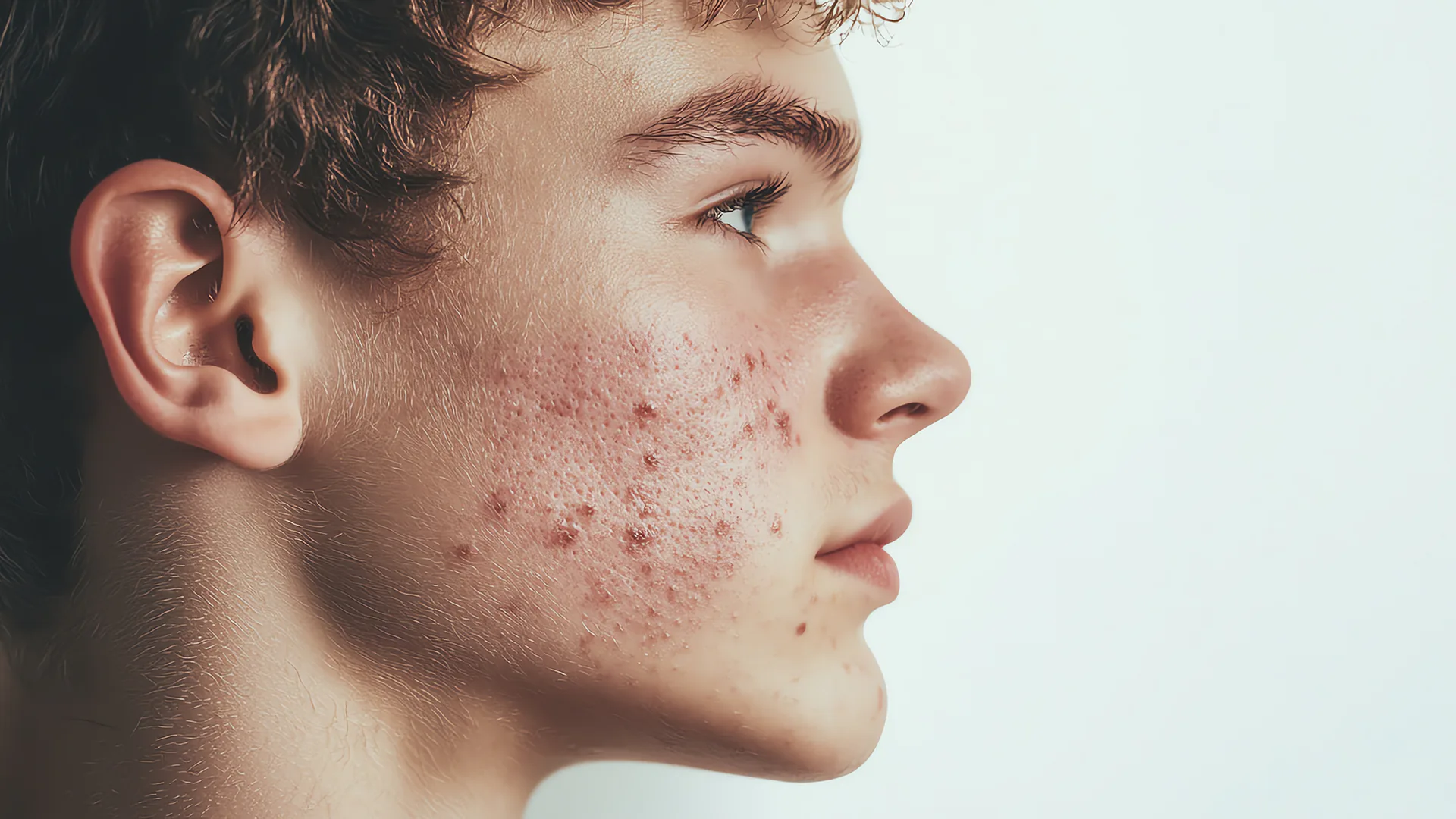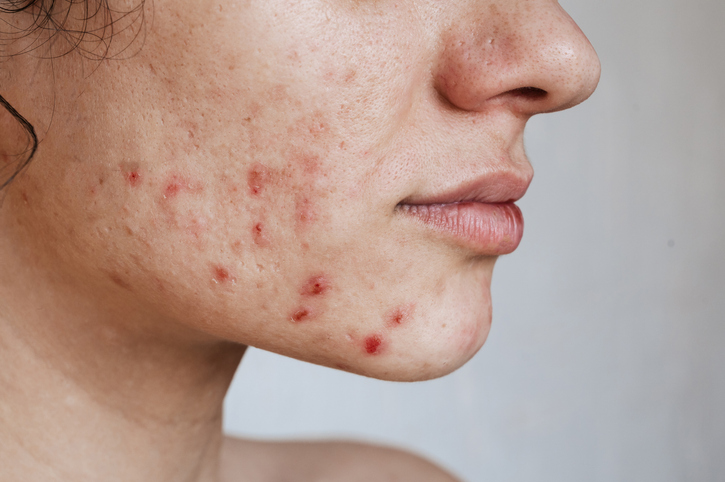


Discover the art of subtle enhancement with personalized care that respects your natural beauty.
Acne scarring occurs when severe breakouts damage the skin’s deeper layers, often resulting in indented or raised marks. These scars form as the skin tries to repair itself, leading to uneven texture and pigmentation. At GHB Clinic London, we offer a range of specialised treatments designed to smooth the skin and restore a clear, balanced complexion.
We specialise in science-backed acne scarring treatments designed to improve skin texture, reduce discoloration, and restore confidence. Our advanced CO2 Laser procedures target both the appearance and the underlying causes of scars, ensuring long-lasting, visible results. We offer customised treatment packages tailored to each client's unique skin concerns and budget. This is why we are proud to be the most trusted London clinic for acne scar treatments.
Book Your Free ConsultationAtrophic scars are depressions or “pits” on the skin's surface that occur when the skin fails to produce enough collagen during the healing process. These scars include ice-pick scars, which are narrow and deep, boxcar scars, which are wider and have defined edges, and rolling scars, which create a wavy texture on the skin.

Hypertrophic scars are raised, thick scars that form due to excessive collagen production during wound healing. They are often found at the site of acne lesions and can feel firm or rubbery to the touch, standing out from the surrounding skin.

Post-inflammatory hyperpigmentation refers to dark spots or discoloration left behind after inflammation or injury to the skin. It occurs when the skin produces excess melanin as a response to healing, creating flat, darkened areas that can range in color from light brown to black, depending on skin tone.

At GHB Clinic London, we know achieving clear, healthy skin is a journey. This is why we offer specialised treatment packages tailored to each client’s needs, making effective acne treatment more accessible and impactful.
All our packages are designed with maximum results and affordability in mind.
0% Interest Free Installment Options are available.
A consultation is essential for successful acne treatment. During this personalised session, we will thoroughly discuss your concerns and:
Assess your skin type and the specific type of acne you are experiencing.
Discuss your medical history, lifestyle, and any medications you may be taking.
Determine the best treatment options tailored to your individual needs.
Set realistic expectations regarding treatment outcomes and timelines.
Getting rid of acne scars involves addressing the underlying skin damage with treatments tailored to your skin type and the severity of the scars. Options include laser therapy, which stimulates collagen production to smooth and resurface the skin, and microneedling, which creates controlled micro-injuries to promote skin regeneration and reduce scarring. Chemical peels can exfoliate the top layers of skin to fade shallow scars and improve overall texture, while dermal fillers temporarily fill indented scars for a smoother appearance. Consulting with a dermatologist is essential to determine the most effective treatment plan for your specific needs.
Laser acne treatment is one of the most effective options for treating acne scars, particularly for deeper scars that are difficult to address with topical treatments or chemical peels. By stimulating collagen production and resurfacing the skin, laser therapy helps reduce the appearance of indented scars and uneven texture. While it is highly effective, the 'best' treatment depends on factors such as your skin type, scar type, and desired results. A dermatologist can recommend whether laser therapy or a combination of treatments is most suitable for your skin.
Acne scars can be categorised into two main types: atrophic (depressed) and hypertrophic (raised). Atrophic scars are further divided into ice pick scars, which are deep and narrow, boxcar scars, which are wider and shallow with defined edges, and rolling scars, which are wavy and create an uneven skin texture. Hypertrophic scars, on the other hand, are raised and occur due to excess collagen production during healing, often appearing on the back or chest. Identifying the type of acne scars is essential for selecting the most effective treatment.
Both microneedling and chemical peels are effective treatments for acne scars, but their suitability depends on the type and depth of the scars. Microneedling is often better for deeper scars like ice pick or rolling scars, as it stimulates collagen production and skin renewal from within. Chemical peels, on the other hand, are ideal for superficial scars and discoloration, as they exfoliate the top layers of skin to improve texture and even out skin tone. For many clients, combining both treatments offers the best results by addressing multiple concerns simultaneously. A consultation with a dermatologist can help determine which approach is most beneficial for your skin.
The time frame for seeing results depends on the treatment type and the severity of the scars. For example, laser therapy and microneedling often show improvement after 2–3 sessions, with optimal results appearing over several months. Chemical peels may deliver noticeable results in just a few treatments for mild scars, while topical treatments require consistent use for 8–12 weeks to see progress.
While most acne scars can be significantly reduced, complete removal is not always possible, especially for severe or deep scars. Treatments like laser therapy, microneedling, and dermal fillers can minimise their appearance and improve skin texture. For optimal results, a personalised treatment plan combining multiple therapies is often recommended.
GLOBAL HEALTHCARE AND BEAUTY LTD
63 Shelton Street, London
WC2H 9HE
We are here to answer any questions you may have or to help you book a
free consultation. Simply fill out the form below, and a member of our
team will get back to you as soon as possible.
Let's start your journey to enhanced, natural beauty!